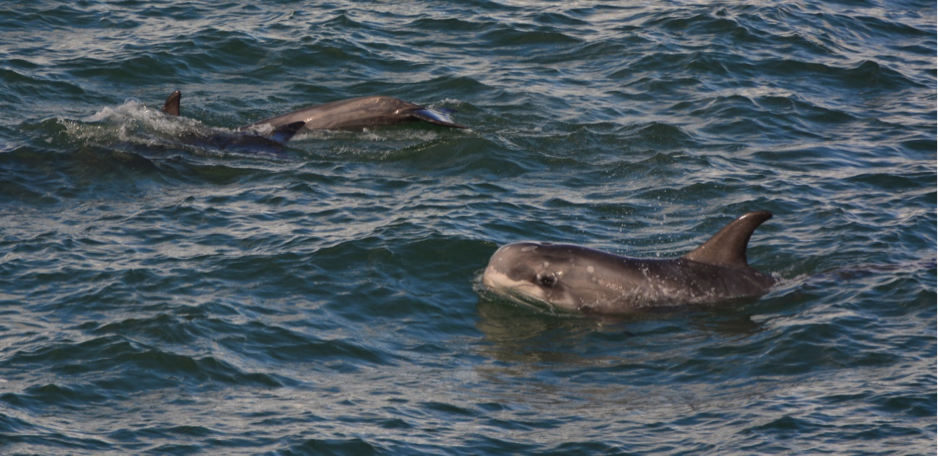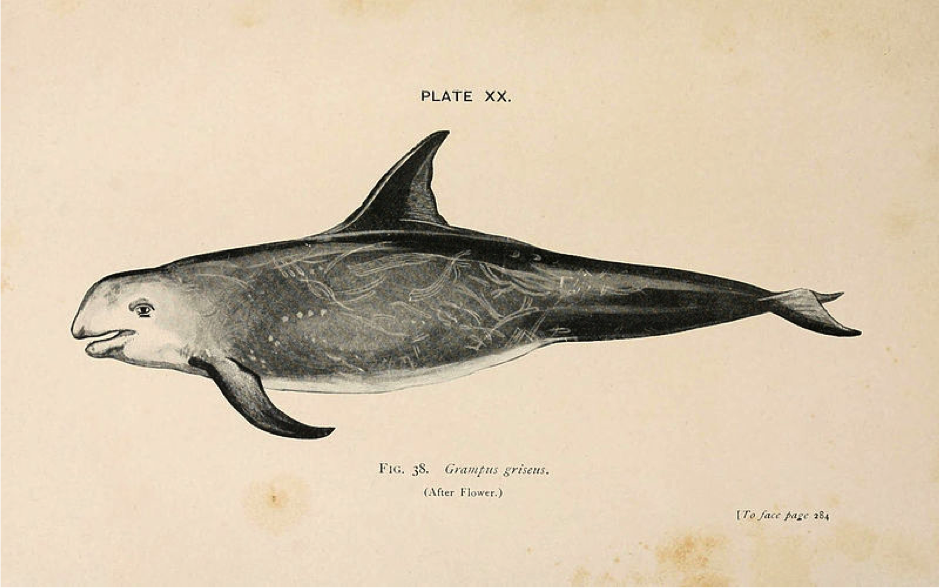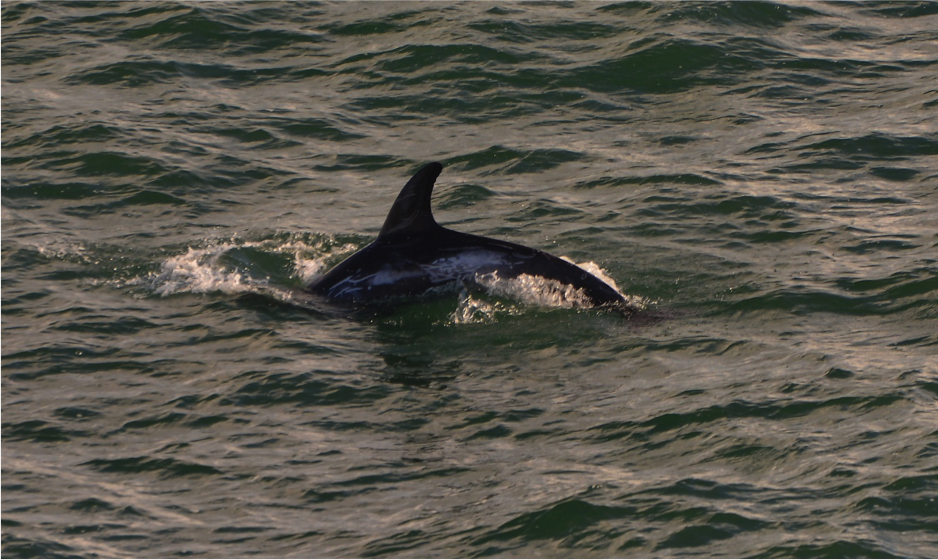A tall curved dorsal fin emerges and a silvery body streaked with peculiar scars breaks through the waves.
Risso’s dolphins are species that may not immediately spring to mind when you think of dolphins in UK waters. However, they are present in our seas, and in some places are even residents!
Risso’s dolphins differ from the more widely known bottlenose dolphins in appearance. They have a rounded, un-beaked head with a bulbous melon, a distinctively tall dorsal fin and grow to a maximum length of around four meters. Whilst they are born a dark grey, their colouration lightens as they age. Not only does their colour alter as they mature, but over time Risso’s dolphins become covered in long, curving groups of scars. These scars are the result of scrapes and scratches from other Risso’s dolphins during social interactions. However, some scars are likely to be left from the bites and tentacle scratches of squid, their main prey source. These scar patterns are unique to each dolphin, much like a human fingerprint, and tell a story of social bonds and of hunting squid in deep, lightless waters.
Whilst the far more abundant bottlenose dolphins are frequently seen close to the coast, often in relatively shallow waters, the Risso’s dolphin favours the deeper waters of continental shelves and undersea mounts. These shelves are typified by a sudden drop in depth of up to 1000m meters deep. It is the undersea geography of these shelves that causes an upwelling that bring an abundance of the Risso’s dolphins’ prey species. These seamounts and continental shelves are found West of the British Isles, so high prey abundance leads to the Risso’s dolphin being a resident to British waters all year round. However, sightings of these dolphins are highest in late summer when the sea around the UK is at its warmest. It has been seen that around 10⁰C is the lower thermal limit for these dolphins, thus excluding them from more frigid polar waters, and resulting in a higher abundance in the UK during summertime.
Risso’s dolphins are by no means isolated to the British Isles, or indeed Europe. They are a cosmopolitan species – their population ranges globally. Due to this global range as well as an estimated high population, their conservation status is listed as ‘Least Concern’ by the International Union for the Conservation of Nature (IUCN), meaning that at the current time the species is not threatened by extinction. However, as with many marine mammals they can be under risk from premature mortality, mainly as result of human influence. Accidental catch, or ‘bycatch’, by commercial fishing is a common cause of death for Risso’s dolphins. The National Marine Fisheries Service (NMFS) of the United States declared in a report in 2009 that the longline fishery was causing a “high level of mortality and serious injury” to marine mammal populations. Risso’s dolphins are by no means the sole species at risk from accidental death as a result of commercial fishing operations. In attempts to mitigate this mortality and injury, measures such as gear modification have been adopted. Whilst the threat of commercial fisheries has been highlighted and attempts have been made to reduce the accidental catch of marine mammals including Risso’s dolphins, the threat still exists and continues to cause premature mortality.
Human influence in the marine environment represents one of the greatest threats to species such as the Risso’s dolphin. Research and monitoring of this species is crucial if we are to understand the impacts of threats such as fishing bycatch on the Risso’s dolphin, and whether or not this species will continue to thrive.
If you want to spot Risso’s Dolphins here in the UK your best bet is to head towards Cornwall, South West and North West Wales, North East Scotland and North West Ireland. Check our recent sightings to see what cetaceans have been spotted near you!
Written by Matthew Hargrave, Intern at Sea Watch Foundation 2016



























